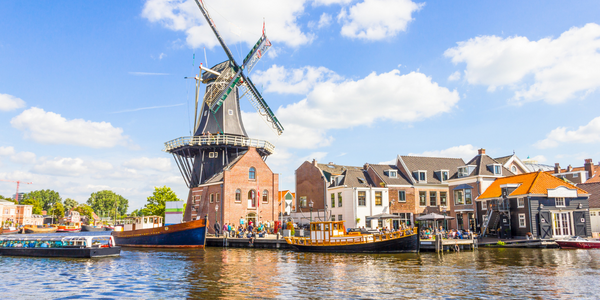技术
- 网络与连接 - 5G
- 平台即服务 (PaaS) - 应用开发平台
适用行业
- 建筑物
- 城市与自治市
适用功能
- 设施管理
用例
- 库存管理
- 智慧城市运营
关于客户
Hands Free Property 是一家物业管理公司,由 Alex B、Arthur Diulgerian 和 Fraser Mackie 于 2018 年创立。该公司最初的创始人管理着几处房产,后来迅速发展到管理着数十处房产,并以其热情和领导力吸引了房主。公司的使命是成为全省乃至全国租赁物业管理领域的领导者。他们管理着多元化的物业组合,包括度假租赁、多单元企业住房、公寓酒店等。该公司总部位于加拿大温哥华,根据牛津经济研究院的北美住房负担能力指数(HAI),该城市被认为是北美负担能力最差的城市。
挑战
Hands Free Property 是一家总部位于加拿大温哥华的物业管理公司,在扩张过程中面临着重大挑战。该公司管理多元化的度假租赁、多单元企业住房、公寓式酒店等产品组合,在处理诸如在多个在线旅行社 (OTA) 上发布列表、回复客人消息以及维护健康的预订日历等任务时遇到了困难。最初,他们外包了其中一些任务,这减少了工作量,但也意味着牺牲一定程度的可见性和控制力。随着公司的不断发展,很明显,为了扩大和扩大在不列颠哥伦比亚省的业务范围,他们需要一种工具来实现任务自动化,同时保留对正在完成的工作的完全自主权。
解决方案
2020 年,Hands Free Property 决定实施 Guesty 的平台,以自动化那些阻碍他们专注于营销和扩展业务的任务。除了现有的直接预订网站之外,该平台的渠道管理器使他们能够在越来越多的 OTA 上列出其房产。多日历功能解决了之前导致利润损失的预订阻塞问题。 Guesty 的收入管理工具允许他们设置付款自动规则。然而,该平台的通信解决方案,包括高效的通信工作流程、集中式统一收件箱以及训练有素的 24/7 全天候访客通信团队,被证明是最重要的游戏规则改变者。
运营影响
数量效益

Case Study missing?
Start adding your own!
Register with your work email and create a new case study profile for your business.
相关案例.

Case Study
Turning A Stadium Into A Smart Building
Honeywell created what it called the “intelligent system” for the National Stadium in Beijing, China, turning the venue for the opening and closing events at the 2008 Summer Olympics into a “smart building.” Designed by highly controversial artist Ai Weiwei, the “Bird’s Nest” remains one of the most impressive feats of stadium architecture in the world. The 250,000 square meter structure housed more than 100,000 athletes and spectators at a time. To accommodate such capacity, China turned to Honeywell’s EBI Integrated Building Management System to create an integrated “intelligent system” for improved building security, safety and energy efficiency.

Case Study
Energy Saving & Power Monitoring System
Recently a university in Taiwan was experiencing dramatic power usage increases due to its growing number of campus buildings and students. Aiming to analyze their power consumption and increase their power efficiency across 52 buildings, the university wanted to build a power management system utilizing web-based hardware and software. With these goals in mind, they contacted Advantech to help them develop their system and provide them with the means to save energy in the years to come.
.png)
Case Study
Smart Street Light Network (Copenhagen)
Key stakeholders are taking a comprehensive approach to rethinking smart city innovation. City leaders have collaborated through partnerships involving government, research institutions and solution providers. The Copenhagen Solutions Lab is one of the leading organizations at the forefront of this movement. By bringing together manufacturers with municipal buyers, the Copenhagen Solutions Lab has catalyzed the development and deployment of next-generation smart city innovations. Copenhagen is leveraging this unique approach to accelerate the implementation of smart city solutions. One of the primary focus areas is LED street lighting.

Case Study
Buoy Status Monitoring with LoRa
The Netherlands are well-known for their inland waterways, canals, sluices and of course port activities. The Dutch Ministry of Infrastructure indicates that there are thousands of buoys and fixed items in and near water environments that would profit from IoT monitoring. One of the problems with buoys for example, is that they get hit by ships and the anchor cable breaks. Without connectivity, it takes quite some time to find out that something has happened with that buoy. Not to mention the costs of renting a boat to go to the buoy to fix it. Another important issue, is that there is no real-time monitoring of the buoys at this moment. Only by physically visiting the object on the water, one gains insight in its status.

Case Study
Barcelona Case Study
Barcelona’s heavy traffic and its associated high levels of pollution were the primary factors that motivated some companies and universities to work on strategies for improving traffic in the city centre. Bitcarrier is one of the technologies involved in the In4Mo Project, whose main objective is to develop the applications that form the core of smart mobility, one of the fundamental pillars of the smart city concept.








